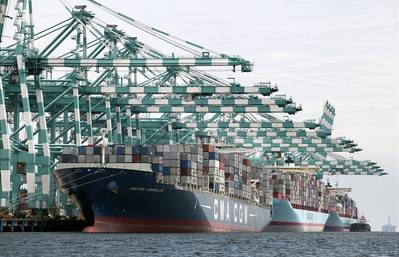Shanghai Cabotage Liberalised: 'Effect Limited' Say Analysts
Cabotage regulations for cargo moving to and from Shanghai have been formally liberalised. Whilst this should be positive for the port’s transhipment activity, the effect is likely to be limited, concludes a recent Drewry Maritime Research analysis, excerpted as follows:
As a by-product of the establishment of the new China (Shanghai) Pilot Free Trade Zone concept, foreign-registered vessels are now officially able to carry containers between Shanghai and other Chinese ports – albeit that the vessels still have to have Chinese owners. Previously the formal position was that this could only be done by Chinese owned, Chinese flagged vessels thereby preventing the use of, amongst others, COSCO’s and CSCL’s foreign flagged ships – in theory.
This apparent change to the rules has fuelled speculation in some quarters that Shanghai’s transhipment activity could increase significantly as a result. However, the reality is that the “relaxation” of the cabotage rules actually only brings formal regulation to what was already happening in practice. In addition, the China (Shanghai) Pilot Free Trade Zone, whilst new, only adds to existing Free Trade Zones in Shanghai’s Yangshan port and Pudong airport – in other words the Free Trade zone concept is not new in Shanghai.
At present, Shanghai does have a significant amount of transhipment activity. It is not an easy function to measure as official “transhipment” statistics include a very substantial volume of river barge traffic handled at the port, but focusing only on seagoing-vessel to seagoing-vessel transhipment, Drewry estimates that this was around 17% of the port’s total throughput in 2012. Due to Shanghai’s sheer scale, this equates to a large absolute number – 5.5 million teu.
The recent formalisation of the cabotage laws will have a positive impact on this, but it is likely to be limited. This is partly because there is little change to what already happens in practice but more importantly because there are other, wider factors at work which mean that Busan, the leading transhipment hub in the region and a major port for serving Chinese Bohai Rim feeder ports, is likely to remain dominant.
Drewry's view
The establishment of Shanghai’s Free Trade Zone (FTZ) and the associated relaxation of cabotage rules should have a positive impact on the port’s seagoing-vessel to seagoing-vessel transhipment activity, but the effect is likely to be limited. Busan’s dominant role in the region as a hub serving Northern Chinese feeder ports looks set to remain, at least for the time being.
Source: Drewry Maritime Research











